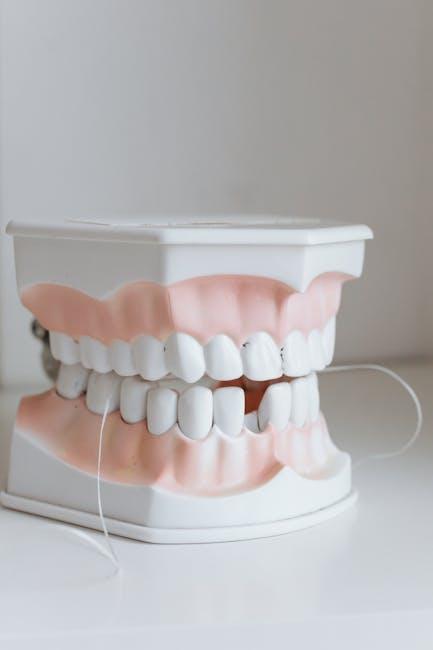Fluoride Ban Could Create Cavities For 1 Of Every 3 U.S. Kids – U.S. News & World Report
Fluoride has long been a cornerstone in the fight against dental cavities, especially among children in the United States. However, recent debates around banning fluoride in public water systems could dramatically increase the risk of cavities, affecting approximately one in every three U.S. kids. This article explores the potential impact of a fluoride ban, the vital benefits fluoride provides, and actionable tips to keep children’s smiles healthy in an evolving dental health landscape.
The Role of Fluoride in Preventing Childhood Cavities
Fluoride is a naturally occurring mineral that strengthens tooth enamel and helps prevent decay. The Centers for Disease Control and Prevention (CDC) recognizes water fluoridation as one of the top public health achievements of the 20th century due to its effectiveness in reducing cavities across all age groups.
- How Fluoride Works: Fluoride helps repair early decay by remineralizing tooth enamel before cavities can form.
- Public Water Fluoridation: Adding fluoride to community water supplies offers equitable cavity prevention benefits, especially for children from low-income families.
- Other Fluoride Sources: Fluoride toothpaste, mouth rinses, and professional treatments supplement the benefits of fluoridated water.
Potential Consequences of a Fluoride Ban
Fluoride bans, whether legislative or community-driven, could drastically change the dental health outlook for America’s youth. According to U.S. News & World Report’s coverage of this issue, roughly one in every three children could develop cavities due to a lack of fluoride exposure. The following risks are critical to consider:
Increased Risk of Dental Decay
Without the protective effects of fluoride in public water, childhood tooth decay rates are expected to rise significantly, leading to:
- More painful cavities and dental emergencies
- Higher dental treatment costs for families
- Increased school absences due to oral health problems
Widening Health Disparities
Fluoride benefits low-income and underserved communities the most, where access to dental care is often limited. Stopping fluoridation may worsen disparities and impact children’s overall health outcomes.
| Community Type | Effect of Fluoride Ban | Expected Cavity Increase (%) |
|---|---|---|
| Low-Income Urban | High impact due to limited alternatives | 40% |
| Suburban Middle Class | Moderate impact; better fluoride access | 25% |
| Rural Areas | Varied impact; some naturally fluoridated water | 30% |
Benefits of Fluoride for Children’s Dental Health
Despite misconceptions, scientifically backed benefits of fluoride include:
- Cavity Prevention: Fluoride reduces tooth decay by up to 35% in children and adults alike.
- Cost-Effective Public Health: Every $1 spent on fluoridation saves approximately $38 in dental treatment costs.
- Safe and Regulated: Fluoride levels in public water are carefully monitored for safety and effectiveness by health authorities.
- Supports Kids’ Overall Health: Healthy teeth improve nutrition, speech development, and self-confidence.
Practical Tips to Protect Children’s Teeth Without Fluoride in Water
If a fluoride ban becomes reality, parents and caregivers can use alternative measures for cavity prevention:
- Use Fluoride Toothpaste & Mouthwash: Incorporate fluoride-containing dental products recommended by dentists.
- Maintain Oral Hygiene: Brush twice daily and floss regularly, especially after sugary snacks.
- Limit Sugary Foods and Drinks: Reduce consumption of sweets, sodas, and starchy snacks that promote bacteria growth.
- Regular Dentist Visits: Schedule professional cleanings and fluoride varnish applications where possible.
- Consider Fluoride Supplements: Consult a pediatric dentist about fluoride tablets or drops if appropriate.
Case Study: Community Fluoride Ban and Its Aftermath
In 2017, a small town in Oregon voted to discontinue fluoridation of their water supply. Within two years, local health officials reported a 28% increase in new cavity cases among elementary-aged children. The community consequently launched educational initiatives and expanded dental outreach, yet the increased dental burden persisted.
“The rise in cavities was quick and alarming. Parents saw their kids suffer more pain and incur higher dental costs,” said Dr. Emily Hart, a pediatric dentist involved in the outreach program.
First-Hand Experience: A Parent’s Perspective
Jessica, mother of two in a city debating a fluoride ban, shares her concerns:
“When I heard the fluoride ban might pass, I worried about my kids’ teeth. We used to rely on the water fluoride as a safety net. Now we’re extra vigilant with brushing and seeing dentists regularly. I just hope policymakers understand how critical fluoride is for kids’ health.”
Conclusion: The Importance of Fluoride in Protecting U.S. Kids from Cavities
A fluoride ban could have a profound impact on childhood dental health in the U.S., potentially increasing cavity rates for 1 out of every 3 children. The science clearly supports fluoride’s safety and effectiveness as a preventive tool. As communities debate the future of fluoride in water, it is vital parents, healthcare professionals, and policymakers collaborate to ensure all children have access to cavity-preventing measures and maintain healthy smiles.
Whether through water fluoridation, professional dental treatments, or home care routines, fluoride remains an essential component in safeguarding children’s oral health and wellbeing.


